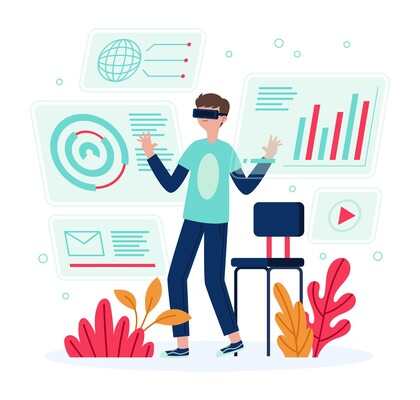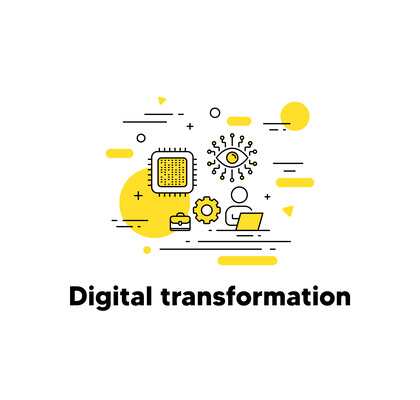The advancements in technology have revolutionized various aspects of our lives, and healthcare is no exception. Telemedicine, the practice of using telecommunications technology to provide remote healthcare services, has emerged as a groundbreaking solution that brings healthcare directly to patients, irrespective of their location. In this article, we will explore the concept of telemedicine, its advantages, applications, challenges, and the future it holds for the healthcare industry.
I. Introduction
Telemedicine, also known as telehealth, refers to the use of digital communication tools and technology to deliver healthcare services remotely. It involves real-time interactions between healthcare providers and patients, enabling access to medical expertise and advice regardless of geographical barriers. Telemedicine encompasses a wide range of services, including remote consultations, diagnosis, monitoring, and even remote surgeries.
The importance of telemedicine in healthcare cannot be overstated. It has the potential to improve access to healthcare, especially for individuals residing in rural and underserved areas. Telemedicine provides a convenient and flexible way for patients to receive medical care, eliminating the need for extensive travel or long waiting times. It also offers cost-effective healthcare delivery, reducing healthcare expenses for both patients and providers. Moreover, telemedicine optimizes the use of healthcare resources, ensuring that medical professionals can allocate their time and expertise efficiently.
II. Advantages of Telemedicine
A. Improved access to healthcare
Telemedicine breaks down the barriers of distance and allows patients to connect with healthcare providers regardless of their location. This is particularly beneficial for individuals living in remote areas, where access to specialized medical care may be limited. Through telemedicine, patients can consult with specialists, receive diagnoses, and access treatment options that might otherwise be out of reach.
B. Convenience and flexibility
One of the key advantages of telemedicine is its convenience and flexibility. Patients no longer have to wait for hours in crowded waiting rooms or travel long distances to see a doctor. With telemedicine, they can schedule virtual appointments at their convenience, saving time and reducing the stress associated with traditional in-person visits. Telemedicine also offers flexibility in terms of appointment scheduling, allowing patients to receive medical care without disrupting their work or personal commitments.
C. Cost-effective healthcare delivery
Telemedicine presents a cost-effective alternative to traditional healthcare delivery. By eliminating the need for physical infrastructure and reducing overhead costs, telemedicine can lower the overall healthcare expenses for both patients and providers. Patients can save money on transportation, parking fees, and missed workdays, while healthcare organizations can optimize their resources and improve operational efficiency.
D. Efficient use of healthcare resources
With the growing demand for healthcare services, optimizing the use of healthcare resources becomes crucial. Telemedicine allows healthcare providers to reach a larger patient population without the need for additional physical infrastructure or hiring more staff. This efficient allocation of resources helps in reducing waiting times, increasing patient throughput, and ensuring timely access to medical care.
III. Applications of Telemedicine
Telemedicine finds applications across various areas of healthcare, transforming the way medical services are delivered. Some key applications include:
A. Remote consultations and diagnosis
Telemedicine enables patients to consult with healthcare professionals remotely, using video conferencing or telephonic interactions. This allows for quick access to medical advice, diagnosis, and treatment recommendations. Patients can discuss their symptoms, share medical history, and receive appropriate guidance from the comfort of their homes.
B. Remote patient monitoring
Telemedicine plays a vital role in remote patient monitoring, especially for individuals with chronic conditions or those recovering from surgeries. Through wearable devices and connected medical equipment, patients can transmit their vital signs, such as blood pressure, heart rate, and glucose levels, to healthcare providers. This real-time monitoring allows healthcare professionals to track patient health, identify potential issues, and intervene proactively.
C. Telepsychiatry and mental health support
Mental health support is an essential aspect of healthcare, and telemedicine has made significant strides in this domain. Telepsychiatry enables individuals to access mental health services, including therapy sessions, counseling, and medication management, through virtual platforms. This approach removes barriers like stigma, geographical limitations, and transportation challenges, making mental healthcare more accessible and convenient.
D. Telemedicine in rural and underserved areas
Rural and underserved areas often face challenges in accessing specialized medical care. Telemedicine bridges this gap by connecting patients in remote locations with healthcare providers from urban centers. This ensures that patients in rural areas have access to expert opinions, consultations, and even follow-up care, improving healthcare outcomes and reducing health disparities.
IV. Technology and Infrastructure for Telemedicine
The successful implementation of telemedicine relies on robust technology and infrastructure. Some key components include:
A. Internet and connectivity requirements
A reliable internet connection is essential for seamless telemedicine services. High-speed internet connectivity allows for smooth video consultations, secure data transmission, and real-time monitoring. Efforts should be made to expand internet access to remote and underserved areas, ensuring equal opportunities for quality healthcare.
B. Secure communication platforms
Telemedicine relies on secure communication platforms that protect patient confidentiality and comply with data privacy regulations. Healthcare organizations need to implement encrypted platforms that safeguard patient information and provide a secure environment for virtual consultations and medical data exchange.
C. Medical devices and wearable technology
The integration of medical devices and wearable technology enhances the capabilities of telemedicine. Devices such as blood pressure monitors, glucose meters, and EKG machines can transmit patient data to healthcare providers, enabling remote monitoring and assessment. Wearable devices, like smartwatches and fitness trackers, can also provide valuable health information for preventive care and early detection of health issues.
D. Electronic health records (EHR) integration
Seamless integration with electronic health records (EHR) systems is crucial for effective telemedicine. EHR integration allows healthcare providers to access patient medical history, diagnostic reports, and medication records during virtual consultations. This comprehensive view of the patient’s health information enables better-informed decisions and continuity of care.
V. Challenges and Limitations of Telemedicine
While telemedicine offers numerous benefits, it also faces certain challenges and limitations that need to be addressed. These include:
A. Legal and regulatory barriers
Telemedicine is subject to various legal and regulatory frameworks, which can vary across jurisdictions. Licensing requirements, reimbursement policies, and privacy regulations can pose challenges for healthcare providers and limit the widespread adoption of telemedicine. Policymakers need to work towards creating a favorable legal environment that supports telemedicine practices while ensuring patient safety and privacy.
B. Privacy and security concerns
The transmission of sensitive patient information over digital platforms raises concerns about data privacy and security. Healthcare providers must implement robust security measures, including encrypted communication channels and secure storage of patient data. Compliance with data protection regulations, such as HIPAA in the United States, is crucial to maintain patient trust and confidentiality.
C. Technical limitations and infrastructure gaps
Telemedicine relies heavily on technology infrastructure, including internet connectivity and reliable communication platforms. In areas with poor internet access or limited technological resources, telemedicine implementation may be challenging. Efforts should be made to bridge the infrastructure gaps and ensure equitable access to telemedicine services for all individuals, regardless of their geographical location.
D. Patient acceptance and adoption
Telemedicine introduces a significant shift in the way healthcare is delivered, requiring patients to adapt to virtual consultations and remote monitoring. Some individuals may be hesitant or resistant to embracing telemedicine due to various factors, such as lack of familiarity with technology or concerns about the quality of care. Patient education and awareness campaigns are essential to promote the benefits of telemedicine and address any misconceptions.
The future of healthcare is virtual, with telemedicine paving the way for personalized and efficient medical services.
– Michael Anderson
VI. Overcoming Telemedicine Challenges
To maximize the potential of telemedicine, it is crucial to address the challenges and overcome the limitations. Some strategies include:
A. Policy and regulatory changes
Policymakers need to review and update regulations to facilitate the widespread adoption of telemedicine. This includes streamlining licensing requirements, ensuring fair reimbursement models, and developing clear guidelines for telemedicine practices. Collaborative efforts between healthcare stakeholders and policymakers are necessary to create an enabling environment for telemedicine to thrive.
B. Strengthening data privacy and security
Healthcare organizations must prioritize data privacy and security in telemedicine implementations. Robust encryption measures, secure storage systems, and strict access controls should be in place to protect patient information. Regular audits and compliance with privacy regulations are essential to maintain patient trust and confidence in telemedicine services.
C. Improving telecommunication infrastructure
Efforts should be made to improve telecommunication infrastructure, particularly in underserved areas. This involves expanding high-speed internet access, strengthening network connectivity, and investing in reliable communication platforms. Public-private partnerships can play a crucial role in developing infrastructure solutions that support telemedicine initiatives.
VII. Telemedicine and Patient Care Experience
Telemedicine has the potential to significantly enhance the patient care experience in various ways:
A. Patient satisfaction and convenience
Telemedicine offers convenience and flexibility to patients, allowing them to access healthcare services from their homes or workplaces. Virtual consultations eliminate the need for travel, waiting rooms, and long wait times, leading to improved patient satisfaction.
B. Empowerment and engagement in healthcare
Telemedicine empowers patients to take an active role in their healthcare journey. Through telemedicine, patients have easier access to their medical records, can participate in shared decision-making, and have increased engagement in managing their health.
C. Improved continuity of care
Telemedicine facilitates better continuity of care, especially for individuals with chronic conditions or complex medical needs. Virtual follow-up consultations, medication management, and remote monitoring ensure that patients receive timely interventions and support, leading to improved health outcomes.
VIII. Future Trends in Telemedicine
The future of telemedicine holds exciting possibilities, driven by technological advancements and evolving healthcare needs. Some key trends to watch for include:
A. Artificial intelligence and machine learning
Artificial intelligence (AI) and machine learning (ML) technologies can enhance telemedicine capabilities. AI-powered algorithms can assist in medical diagnosis, data analysis, and personalized treatment recommendations. ML algorithms can learn from large datasets to improve accuracy and efficiency in telemedicine applications.
B. Virtual reality and augmented reality
Virtual reality (VR) and augmented reality (AR) have the potential to transform telemedicine experiences. VR can create immersive environments for patient education, mental health interventions, and even surgical simulations. AR can overlay medical information onto real-world scenarios, aiding in remote consultations and surgical guidance.
C. Blockchain technology for secure health data
Blockchain technology can revolutionize health data management in telemedicine. By providing secure and transparent data transactions, blockchain can enhance patient privacy, streamline data sharing among healthcare providers, and enable interoperability between different telemedicine platforms.
IX. Conclusion
Telemedicine is revolutionizing healthcare by providing convenient, accessible, and cost-effective medical services. With advancements in technology, telemedicine offers new possibilities for remote consultations, remote monitoring, and improved patient care experiences. While challenges exist, collaborative efforts from policymakers, healthcare providers, and technology innovators can overcome these barriers and unlock the full potential of telemedicine. As we embrace the future of healthcare at our fingertips, it is evident that telemedicine will continue to play a vital role in transforming healthcare delivery and improving patient outcomes.


















































